Several yōkai (Japanese folk monsters) inhabit the upstairs closet at the Kitarō Chaya teahouse in Chōfu (Tōkyō). Visible through peepholes in the door, these traditional monsters -- which are based on old folktales from across Japan -- appear in the popular GeGeGe no Kitarō manga/anime by Shigeru Mizuki, a long-time resident of Chōfu. (Click the [+] to enlarge each image.)
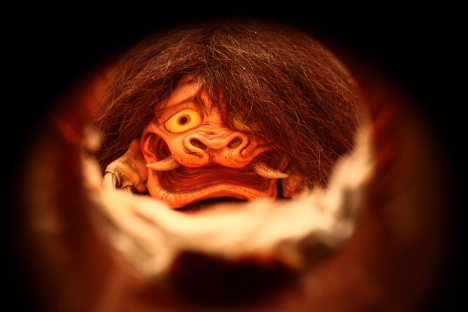
Otoroshi [+]
The Otoroshi, a hairy creature depicted in Edo-period books and picture scrolls, perches atop the gates to shrines and temples, waiting to snatch up impious and ill-intentioned people passing below. [More]
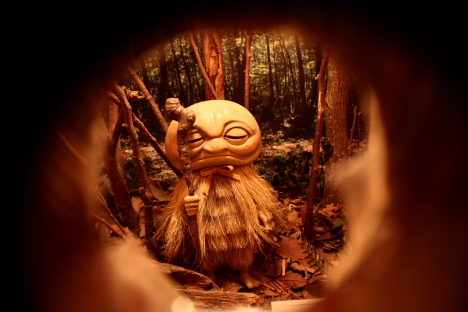
Abura-sumashi [+]
The Abura-sumashi (lit. "Oil Presser"), a folk monster from Kumamoto prefecture known for harassing mountain travelers, is believed to be the reincarnated spirit of an oil thief. Long ago, oil was essential for lighting and heating homes, and the divine punishment for people guilty of stealing this valuable commodity -- particularly from temples and shrines -- was reincarnation as a yōkai. [More]
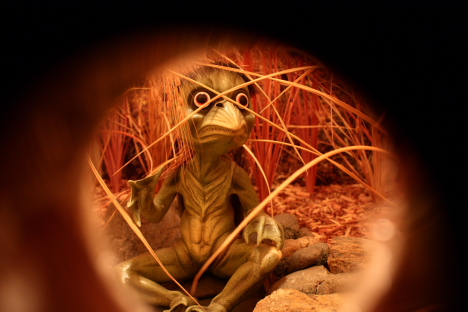
Kappa [+]
The Kappa, probably the most well-known yōkai in Japan, is a mischievous and often dangerous river imp. [More]
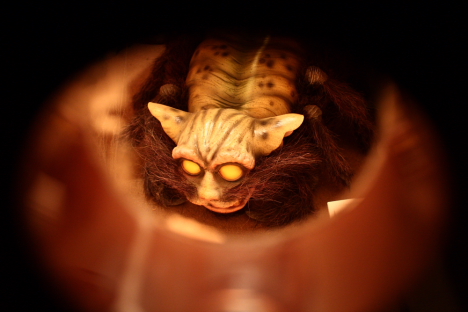
Tsuchigumo [+]
The Tsuchigumo is a large blood-sucking spider sometimes found under the floorboards of old houses. Details about this creature vary from tale to tale, and some theories suggest the monster's origins can be traced back to the exaggerated and embellished stories of encounters with mountain-dwelling people of ancient Japan, who were also referred to as "tsuchigumo" (lit. "ground spiders"). [More]
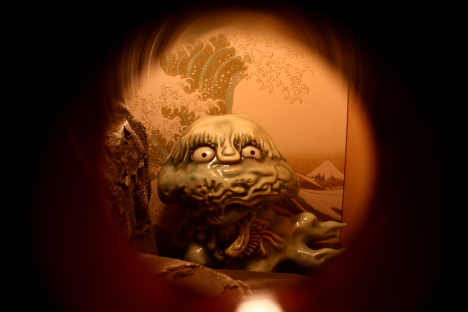
Kurage no Hinotama [+]
The Kurage no Hinotama is a jellyfish-shaped fireball (will-o-wisp) found near the sea. An account from the mid-18th century tells of a samurai who encountered one such ghostly flame on a warm breezy night at Zenshoji temple in Ishikawa prefecture. The man tried to slash the floating apparition with his sword, but to no avail. Unscathed by the attack, the fireball discharged a sticky red sap-like substance onto the man's face. [More]
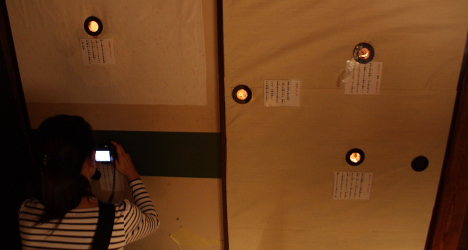
Peepholes in the closet doors upstairs
* * * * *
In addition to the small collection of yōkai art upstairs, the Kitarō Chaya includes a gift shop and a tiny cafe that serves GeGeGe no Kitarō-themed drinks and snacks. The teahouse is located just outside the main entrance to Jindaiji temple, which is a 20-minute bus ride from Chōfu station (bus #34, north side of station, 200 yen).

The Envoy
The oni is missing from the display. Maybe they couldn't fit such a big creature in? :P
[]